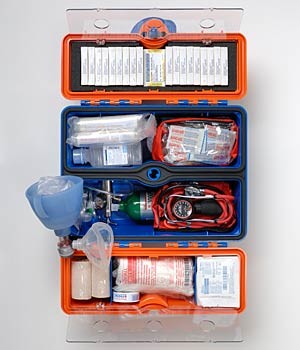While the Covid-19 pandemic has been officially declared over, respiratory viruses (like influenza, among others) continue to regularly cut a deadly swath across humanity. At longer intervals these outbreaks reach epidemic or even pandemic levels.
Despite Covid-19, whose exact origin remains unknown, we are nonetheless overdue for another historically big flu pandemic, the last of which occurred during World War I and was incorrectly named the Spanish Flu (hint: it didn’t come from Spain). It swept around the world with ease in four distinct waves from March 1918 to April 1920, well before the age of modern passenger aviation. It killed an estimated 25 million to 50 million people, and possibly double that.
So, it’s wise to be prepared to deal with the inevitable at our level. Plenty of gloves and N95 masks, anyone?
A relatively new addition to our onboard medical kit is a pulse oximeter. The device uses light beams to estimate the pulse rate and the oxygen-saturation level of blood (expressed as a percentage). It can be used to determine whether someone needs immediate advanced medical care. The key word to remember here is “estimate.”
The type of pulse oximeters that are available to the public are typically not as accurate as those used by medical professionals and the absolute numbers may well be somewhat off. Neither are nearly as accurate as a lab-performed blood-gas analysis, which requires the drawing of a blood sample. Their utility is simply to measure trends over time with reasonable accuracy. Is a crewmember’s blood oxygen-saturation level stable, decreasing, or increasing? That information, along with careful observation for other symptoms such as difficulty breathing and signs of cyanosis (bluishness) of the face, lips, and fingers and toenails, can help you make the best decisions.
It’s very important to understand the limitations of these devices, and how to properly use them (read and follow the manufacturer’s directions) in order to correctly interpret the results.
For important in-depth information read the “Pulse Oximeter Accuracy and Limitations: FDA Safety Communication” (www.fda.gov/medical-devices/safety-communications/pulse-oximeter-accuracy-and-limitations-fda-safety-communication) which was last updated in November.




